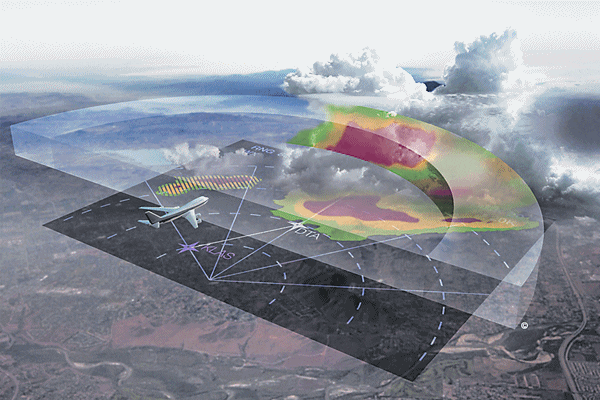Pilots make in route decisions to get passengers to their destination safely and quickly
Honeywell Aerospace’s IntuVue RDR-4000 3-D Weather Radar provides pilots with real-time and accurate weather information. Siddharth Sen, director – marketing & business development, Honeywell Aerospace, India, speaks about how they are providing pilots with early warnings for upcoming adverse weather conditions and ensuring passenger safety
What are the key features of IntuVue RDR-4000 3D Weather Radar?

The need for technology that provides pilots with a clearer view of weather conditions has become increasingly important. With Honeywell’s IntuVue RDR-4000 3D weather radar, pilots can face extreme weather conditions using its 3D display to see an accurate and intuitive view of weather hazards from zero to 60,000 feet across a 320nm detection range. Honeywell’s weather radar has a number of key features such as, the high-resolution ground mapping feature, ensuring pilots have better awareness of the environment, especially in difficult visual settings. In addition to this, the weather radar has a cost effective design and is 30 per cent lighter than existing systems, saving airlines US$ 10,000 per aircraft, per year in fuel.
How does it help a pilot navigate through inclement weather?
With IntuVue’s complete display view and weather analysis tools, pilots have better weather situational awareness and a better understanding of weather hazards to quickly calculate the best route to take. IntuVue is also the first radar to offer predictive warnings for hail, lightning and wind shear, five to 10 minutes before they occur. This results in improved routing around hazards, ensuring flights are not delayed due to extreme weather conditions.
How does IntuVue RDR-4000 3D weather radar and the GoDirect suite of services ensure passenger safety?
Using IntuVue RDR-4000 3D weather radar and GoDirect Weather, pilots can see real-time weather data on their flight path helping them make in route decisions to get passengers to their destination safely and quickly. GoDirect Weather shows real-time weather and trend information from the cockpit and includes enhanced communication so pilots are aware of historical and current weather patterns as well as weather forecasts. These features can help them better avoid turbulence reducing the likelihood of injuries, passenger concern and discomfort.
Earlier this year, Honeywell worked closely with Cathay Pacific to trial GoDirect Connected Maintenance to see how it can affect mechanical components on the plane, whilst demonstrating the power of data analytics to maintain the upkeep of an aircraft by improving performance and reducing downtime. Using Connected Maintenance, ground personnel can better monitor aircraft operations to identify component health and help pilots make timely decisions to land the aircraft safely. Results showed the program reduced operational disruptions by 35 per cent and saved the airline thousands in overall operational and maintenance costs.
How are you advocating the safety concepts among airlines in India? Which airlines have implemented these?
Honeywell Aerospace has been in the Indian aviation market for over 40 years. In 2013, Air India installed the IntuVue RDR-4000 3D weather radar to 20 aircraft in its Boeing 777 fleet to significantly improve its weather prediction and avoidance. As per Air India’s flight operations team, the technology significantly improved the team’s ability to predict upcoming adverse weather and turbulence. With the help of IntuVue RDR-4000 and its tomographic and layered display, the airline could navigate through the monsoon season in Delhi, making smart decisions that ultimately improved passenger comfort and safety. Jet Airways recently adopted Honeywell’s GoDirect Fuel Efficiency software to reduce fuel use and costs for the airline.
Any other significant factor you are keen to highlight.
Honeywell never stops pursuing ways to create safer and more efficient flights. In fact, we’ve continuously invested in the research and development of Connected Aircraft technologies that will help pilots and flight crews access information for better flight planning and improved safety. For example, Honeywell combined its 3D weather radar with connectivity to crowdsource weather information from other aircraft around the world presenting a full picture of weather along a projected route. This development will keep the pilot aware real-time and upcoming weather for intelligent and responsive decision-making. Thus, this technology is very helpful for aircraft flying over water or in remote areas, where radar signals aren’t always available or are blocked by signal obstacles.
To support the Connected Aircraft revolution globally, Honeywell solutions offer market-leading satellite communications hardware, such as JetWave for in-flight Wi-Fi, and the GoDirect suite to improve cabin connectivity, flight efficiency and maintenance services. The solutions are designed to improve fleet management, increase flight safety and optimize operation, all reducing aircraft maintenance time and costs. Ultimately, the key is to enhance the passenger experience to provide a smoother in-flight journey.

